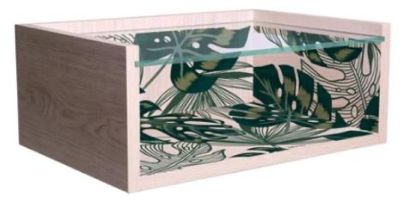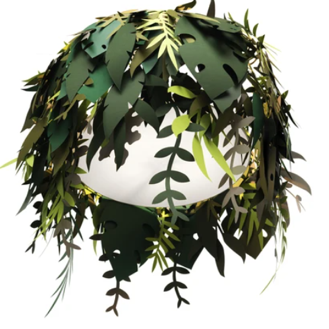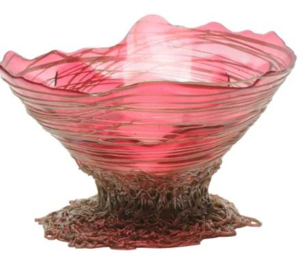- More
MagazineVideo
See More
×
Newsletter
Subscribe
Fashion
Runway
Luxe
Beauty
Celebrity
Vogue Man
Vogue Living
Video
Vogue Circle
Beauty Awards
Vogue Voice
Follow us
- Eng
- 中文
- Fashion
- Runway
- Luxe
- Beauty
- Celebrity
- Vogue Man
- Vogue Living
- Video
- Vogue Circle
- Beauty Awards
- Vogue Voice
- Newsletter
- Subscribe
- Terms and Conditions
- Contact
- Careers
- Advertising
Follow us

Art & Lifestyle
Hong Kong may not be known for its greenery, but here's how urban architects are embracing the great outdoors with the popular 2021 design trend

by Claudia Woo
22 Jul 2021
2020’s interior design trends already had an affinity for the natural world. Organic shapes and natural materials gained traction, while sustainable living reigned at the forefront. With the pandemic, a need for accessible wellness spilled into our urban environment. In 2021, expect the rise of biophilic design, where shapes, materials and more centre around our relationship with nature. Best of all, biophilic design’s health benefits span physical and mental wellness, even boosting productivity. Discover our guide to Hong Kong’s best biophilic architecture and our product recommendations below.
K11 MUSEA
Architects: Kohn Pedersen Fox and James Corner Field Operations worked with over 100 creative talents from around the world- including artists, craftsmen, designers, environmentalists and more.

Facade of K11 MUSEA
Photo: Courtesy of K11 MUSEA
Facade of K11 MUSEA
Photo: Courtesy of K11 MUSEA
Artisanal complex K11 MUSEA is a work of architectural mastery on the Tsim Sha Tsui waterfront. Christened A Muse by the Sea, its exterior presents layers of Portuguese limestone interspersed with the Facade of cylindrical glass tubes. It’s covered with one of the world’s largest living walls, which offers a harmonious contrast to the beige while adding an organic fluidity to the building’s curved outline, reminiscent of natural patterns. Other notable architectural features include the 35-metre-high atrium, with the DNA-inspired Oculus vault sculpture adorning the apex. Escalating Climbers, mimicking sprawling roots, drapes over a ground-floor escalator. On the 7th floor, a canopy of arches and honeycomb-esque hexagonal pavilions spill into the lush Bohemian Garden. Housing playgrounds, aquariums and programmable skylights, K11 MUSEA has revolutionised cultural retail.
Read Next
Your Complete Guide to Hong Kong’s K11 MUSEA
Art & Lifestyle / 4 years ago
Taikoo Place
Architects: Wong & Ouyang, Gustafson Porter & Bowman (open space garden), Hugh Dutton & Associés (elevated walkways connecting all the buildings)
View this post on Instagram
With a network of 10 office buildings, Taikoo Place is best known for its popularity as a bustling business hub. The commercial complex is also abound with greenery and a range of sustainable design features, with the aim of transforming the office landscape into a human-centric area prioritising health. One Taikoo Place branches into other buildings with living green spaces, with a lobby exhibiting vertical wall motifs in earthy tones and receptions of sculpted stone. Meanwhile, the lush landscaped garden Taikoo Park spans over 4 acres. Phase 2 of the current redevelopment scheme set for 2022 anticipates the creation of two open gardens spotlighting regional foliage and sculptural water attractions.
Clubhouse Mongkok Skypark
Architects: Designed by Dutch architectural firm concrete, working together with New World Development led by Adrian Cheng, P&T Architects Ltd and Adrian L. Norman Ltd
View this post on Instagram
A sanctuary ensconced in Hong Kong’s most vibrant shopping district, the residential clubhouse and rooftop is immersed in biophilia with a chic, contemporary twist. The Aurora clubhouse offers a bar, art gallery, pool and more – all streaming into one another, only separated by a few glass partitions. Floor-to-ceiling windows allow for natural light and a spacious, airy vibe, and dotted around are rustic patterned rugs, a marble kitchen island and egg-shaped hanging chairs. Up the Sky Stairs, a terraced seating area resembling bushes, is the rooftop park. Flora and fauna abound, including verdant living walls and foliage spilling from the 4 protruding towers.
Our how-to guide on biophilia at home
Luciana Gomez Bed Side Table PLUMA, wall-mounted, handmade in oak with poplar laminate with glass tabletop. Other patterns and personalised engravings available; HK$3,442.94 at designitaly.com
Marcantonio Suspension Lamp AMAZZONIO, Handcrafted with ash wood structure, steel lampshade covered in paper leaves, floor lamp version available; HK$4,186.08, designitaly.com
Gaetano Pesce for Fish Design Resin Bowl OGIVA (size M), resin drippings and filaments, handmade to order so hue will vary slightly, various sizes available; HK$4,016.76, designitaly.com
ORLA KIELY Rose Small Sofa- Kimono Forest / Linear Stem Khaki, polyester with wood and brass legs, sunflower and persimmon designs available; HK$10,369, amara.com
TREE Natural Teak Wood Stool, handcrafted in Indonesia; HK$1,250; tree.com.hk
TREE Bangkuan Graphic Hanging Basket, handcrafted in the Philippines, woven in bangkuan fibre, available with white bands; HK$495, tree.com.hk
TREE Lava Coffee Table- Round, handcrafted and hand-etched to resemble dried lava, available in 2 other colourways and smaller size with graphic lines on top surface; HK$4,750, tree.com.hk
LANTERNE By Zanellato / Bortotto GM leather and wood with removable, rechargeable LED light and frosted glass bulb; HK$77,500, hk.louisvuitton.com
Concertina Shade by Raw Edges metal frame lined with leather, holds 8 paper petals; HK$60,500, hk.louisvuitton.com
Diamond Sofa by Marcel Wanders & Gabriele Chiave ash wood base with leather, available in milk colour; HK$800,000, hk.louisvuitton.com
Mimba with Resin Table Top mimba wood with resin, each mimba slab is different causing river shape in the middle to vary; HK$17,680, emohdesign.com
Wooden Sculpture indonesian teak wood with protective wood finish; HK$1,780, emohdesign.com
Luciana Gomez Bed Side Table PLUMA, wall-mounted, handmade in oak with poplar laminate with glass tabletop. Other patterns and personalised engravings available; HK$3,442.94 at designitaly.com
Marcantonio Suspension Lamp AMAZZONIO, Handcrafted with ash wood structure, steel lampshade covered in paper leaves, floor lamp version available; HK$4,186.08, designitaly.com
Gaetano Pesce for Fish Design Resin Bowl OGIVA (size M), resin drippings and filaments, handmade to order so hue will vary slightly, various sizes available; HK$4,016.76, designitaly.com
ORLA KIELY Rose Small Sofa- Kimono Forest / Linear Stem Khaki, polyester with wood and brass legs, sunflower and persimmon designs available; HK$10,369, amara.com
TREE Natural Teak Wood Stool, handcrafted in Indonesia; HK$1,250; tree.com.hk
TREE Bangkuan Graphic Hanging Basket, handcrafted in the Philippines, woven in bangkuan fibre, available with white bands; HK$495, tree.com.hk
TREE Lava Coffee Table- Round, handcrafted and hand-etched to resemble dried lava, available in 2 other colourways and smaller size with graphic lines on top surface; HK$4,750, tree.com.hk
LANTERNE By Zanellato / Bortotto GM leather and wood with removable, rechargeable LED light and frosted glass bulb; HK$77,500, hk.louisvuitton.com
Concertina Shade by Raw Edges metal frame lined with leather, holds 8 paper petals; HK$60,500, hk.louisvuitton.com
Diamond Sofa by Marcel Wanders & Gabriele Chiave ash wood base with leather, available in milk colour; HK$800,000, hk.louisvuitton.com
Mimba with Resin Table Top mimba wood with resin, each mimba slab is different causing river shape in the middle to vary; HK$17,680, emohdesign.com
Wooden Sculpture indonesian teak wood with protective wood finish; HK$1,780, emohdesign.com
1 / 12
Here’s how you can bring the outdoors in. Set the mood with natural light and essential oils and choose earthy palettes on wallpapers and rugs. Patterns mimicking natural shapes such as arches, curves and leaf prints are a good detail, while handmade, organic items and an abundance of houseplants are also essential – grow your own to feel even more connected to nature and display them in baskets. Further immerse yourself in biophilia with tree stump stools and preserved plant walls – the possibilities are endless.
Read Next
How To Live More Sustainably in Hong Kong
Art & Lifestyle / 3 years ago
Editor
Claudia Woo
Credit
Lead image: Courtesy of K11 MUSEA

STAY IN TOUCH
Exclusive style, beauty reviews and culture news directly to your inbox
By providing your email address, you agree to our Privacy Policy.
Cookies help us in providing our services. By using the offer, you agree that we set cookies. More information













